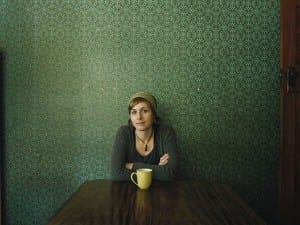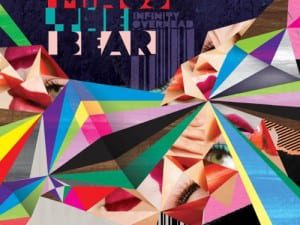Evoking the ethos of the Russian impresario Sergei Diaghilev, Sadler’s Wells contextualises today’s artists, designers and composers, within the sphere of modern performance.
In 1909 Les Ballets Russes transformed the landscape of contemporary dance, with Russia’s ballet elite rejecting the cobwebs of 20 years of neoclassical stagnation and a blinkered focus on ballet as an isolated art form. Under the guidance of Sergei Diaghilev, trailblazers from all areas of performance and culture collaborated to create a groundbreaking fusion of dance, music, art and design as the Ballet Russes took 20th Century Paris by storm.
Sadler’s Wells’ artistic director, Alistair Spalding chose to celebrate the centenary with a collaborative event, commissioning Sidi Larbi Cherkaoui, Javier De Frutos, Russell Maliphant and Wayne McGregor on choreography within the remit of “In the Spirit of Diaghilev”. “I gave them a brief: it should have some connection with that era, and take on the notion of collaboration at the heart of the new works because that’s really what Diaghilev was the master at, bringing people together with different work.”
Although performance has long been a stalwart in visual arts institutions, from the heydays of Yves Klein’s Blue, through to Gilbert and George’s Singing Sculpture, and Mark Wallinger’s Sleeper, there is little recognition travelling in the opposite direction. Beyond the middle class pantomime of annual visits to The Nutcracker, dance hasn’t enjoyed the same surge of popularity and footfall of modern art over the past 10 years. By capturing the interdisciplinary spirit of Diaghilev, this season Sadler’s Wells hopes to attract many outside of the tight knit modern dance fraternity. “If you have a brief run through the history of dance, between the 19th Century and the great traditional ballets, nothing really happened until Diaghilev came along and really shook things up. It offered the opportunity for people like Martha Graham and others who followed to see dance in a different way, it was one of those moments, he just changed the face of what was possible. We still live with his legacy right now in terms of the dance we see on the stage.”
As first class ballerinas, such as Anna Pavlova, Olga Spessivtzena and Vaslav Nijinsky took to the stage to the strains of Igor Stravinsky, Sergi Prokofiev and Richard Strauss, creative visionaries from the worlds of art and design, Pablo Picasso, Coco Chanel, Joan Miro, and Henri Matisse, represented the true satisfaction and enrichment of an immersion in the best culture of the day. “Diaghilev found a way of finding people who had some talent or promise in performing or creating. He found people like Nijinsky and first of all he fell in love with them, but then he educated them. He was greatly cultured and he created this environment to be really radical and he was really adept at finding collaborators.”
Wayne McGregor’s connection with the era signifies the scientific advances represented by Shackleton’s 1909 expedition to the South Pole: “Wayne’s very interested in the relationship between science and art and how it relates to the human body” and so Dyad 1909 conjures a frosty, ethereal land, with film installations from Jane and Louise Wilson, piano, string and electronic soundscapes by Icelandic composer, Olafur Arnalds, and Swarovski emblazoned costumes twinkling in the cold, blue lights of the Antarctic. Sidi Larbi Cherkaoui’s Faun takes its material directly from Les Ballet Russes’ combination of Stéphanie Mallermé’s poem, Claude Débussy’s music and Vaslav Nijinsky’s composition, a combination that caused a stir in its original form through its inherent eroticism. The piece is very much orchestrated by Spalding who selected it especially for Cherkaoui channelling the animalistic quality of his choreography and introduced Cherkaoui to Hussein Chalayan in costume. Rather than a direct reproduction Nitin Sawhney will transgress from the original with electronic intermissions throughout the piece, and in an effort to emulate Diaghilev, Spalding is deliberately provocative: “some people will think that’s absolute sacrilege, but we’re quite keen to stir things up.” Russell Maliphant’s AfterLight draws on Nijinsky’s obsession with circular energy, and his dancing ideal conjured from hundreds of pencil studies on geometry and circular designs. The drawing and painting directly inspire the movement of the dancers in a cross collaboration that includes design from Es Delvin and animators onedotzero. The final work, Eternal Damnation to Sancho and Sanchez, by Javier De Frutos, begins with Jean Cocteau’s scenarios for the Ballet Russes and couples his bizarre imagination with Maurice Ravel’s La Valse, a score derided by Diaghilev, in a clear transgression from his remit, “Diaghilev thought it was undanceable, and Javier thinks not. It’s a wonderful stirring piece of music and that’s going to end the evening.”
Maintaining the mystique that surrounded the Russes performances, at time of going to press the synergy between the four acts remains unclear, all part of the challenge of collaboration and innovation. “All of the choreographers know what the others are planning, they are aware of the greater context, but we won’t know until we put them together at the premiere whether it works, that’s the magic dust that will make the evening work as a whole or not. From what we’ve seen, and from the briefs, we think they all will compliment each other to an evening that works as a whole.”
The roll call of collaborators shows that the season fully intends to embrace Diaghilev’s ethos, although from a sneak preview it seems disappointing that Hussein Chalayan’s intensely scientific interrogation of the boundaries of costume should be cast aside – why can’t the clothes dance and transform with the performers? And that Nitin Sawhney’s track record for collaboration was rejected for a two-part approach to Débussy’s score – why not incorporate the elements together? Despite these missed opportunities, the essence of collaboration remains, with art forms influencing one another in a fusion of creative activity. In working together, the artists benefit from a more fertile ground for each individual discipline, in contrast to the isolation of the artist’s studio – the whole ethos of dance revolves around the individual as an element of a group. “Dance has not got the history of other art forms weighing it down, it’s uniquely able to accommodate these things around it and gives the other artforms space.” The most direct form of interdisciplinary inspiration is found in Maliphant’s work, as the dancers’ movement transformed into Nijinsky’s drawings and paintings, which transferred onto Maliphant’s choreography and onto the dancers’ movement again. This inspiration from visual art is rare but not unique, and seems most explicit in this instance: “Russell uses it a lot as a starting point. I’m not sure that everyone does, I think a lot of people just go into the studio and use the body as a starting point.”
Difference and novelty are integral to the project, despite taking direct inspiration from 100 years ago, Diaghilev’s emphasis was on newness and innovation, and by hand-picking his most admired cohorts, Spalding hopes to capture this essence: “I’m hoping as well as being a tribute it will be an engaging stimulating evening of dance. I picked each one to be involved – they are people I admire and I think they’re the best. They are all associates of Sadler’s Wells and I took people who are open to collaboration and who have a musical sense. They are people who I really admire, accomplished and at the top of their game in choreography so it really wasn’t a difficult choice.”
The most important aspect, and Spalding’s primary focus on the project is the idea of collaboration, and with an exhaustive list of further collaborators, Katrina Lindsay and Michael Hulls (De Frutos), Lucy Carter, Moritz Junge and Kabuki (McGregor), Adam Carrée (Cherkaoui), and Andy Cowton (Maliphant), the scope is overwhelming. “The reason why I’m drawn to dance (and why Diaghilev was) is its need of collaboration.”
In the Spirit of Diaghilev premiered at Sadler’s Wells on 13 – 17 October 2009, accompanied by additional events, and
embarked on a world tour in November 2009. www.sadlerswells.com.
Pauline Bache





